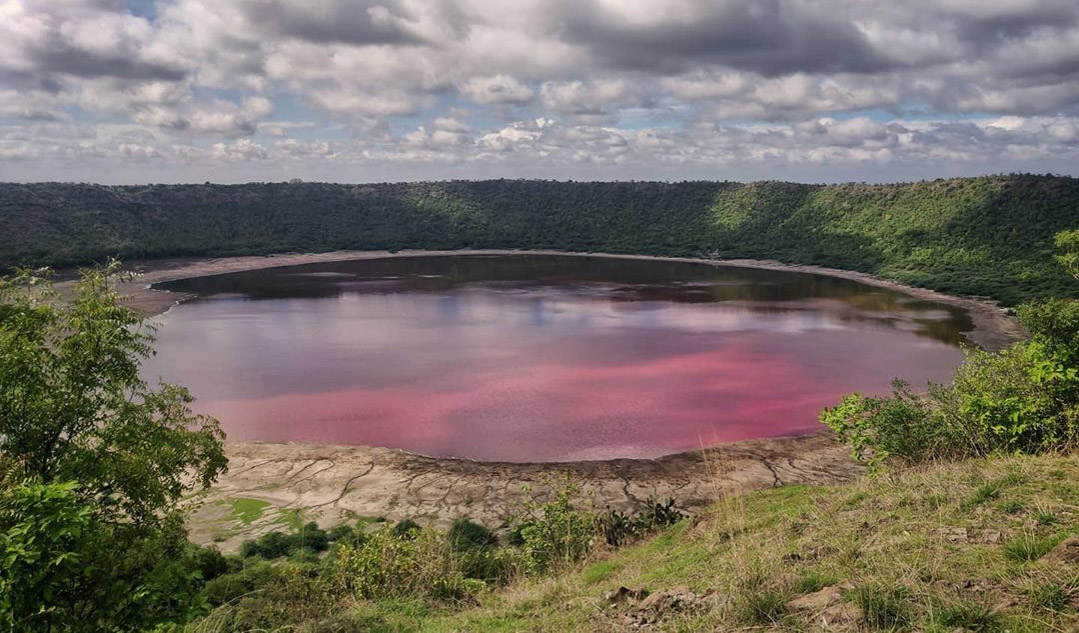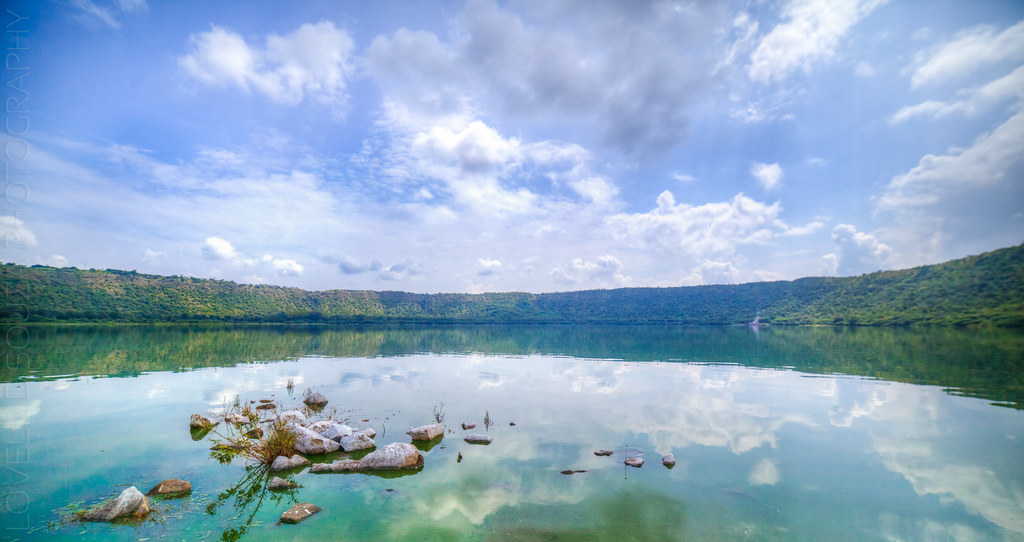
Photo Courtesy twitter/IndEmbMoscow
‘The universe is still a place of mystery ‘, this is really true. As we all live in India, we know the Lonar lake. The most recent thing which surprises us about the Lonar lake is the colour change. It is the third most salty water lake in the world and one of the five largest craters in the world. It is first discovered by the British officer C. J. E. Alexander. It is known as the rich heritage site. It is also called as National Geo – Heritage Monument. It is located in the Buldhana district.
It is created by an asteroid collision with earth impact. about 52,000 years ago, a meteor hit the earth and the lake are formed. The Lonar lake is mystery because no one knows what lies at the bottom of the lake. Even NASA scientists also don’t know about this mystery. The lake is both alkaline and saline. Many people don’t know anything about this lake. The place is fully filled with biodiversity. The reason behind the wide biodiversity is there is no much human habitation in that area. Before this, this lake was in the dark. But now due to the most known phenomenon of the colour change of the lake this lake came into light. First of all, when it is created it’s colour was bluish green because of the presence of diverse blooms of Cynobacteria. But now in one night, the colour of light changed to pink colour. Scientists told that this is due to increase salinity of water and presence of algae in the water. Generally, the bigger salinity of water changes the colour of the water in the lake and according to people living near there, this is not the first time that the colour of water has changed. But the intensity of the colour change has increased. According to scientist, one more reason is the micro-organisms like Dunaliella Salina, Halobacteriaceae and Salinibacterium create special type of colour substances due to which it’s colour changes to red. The more research is going on this mysterious lake.

The average depth of the lake is about 137 meters. It is oval in shape. It has circumference of about 8 Km. It is one of the four hyper-velocity impact craters in basaltic rock. There is also a small circular depression from main lake which is called as ‘Amber lake’. This lake is also called as ‘Chhota Lonar’. The water from the Amber lake is drained by local farmers over there. There is also a different chemical property to the lake. There are two different regions in the lake. Outer layer is neutral and it’s pH is about 7. Inner layer of the lake is alkaline whose pH is about 11. During dry weather, when evaporation occurs water level reduces and the large quantity of soda is collected. Along with the soda there is also formation of common salt that is sodium chloride. Gaylussite is the mineral found in the drill core of Lonar lake.
According to Hindu mythology, it is considered to be the spot where an incarnation of lord Vishnu overpowered the demon-giant Lonasur by throwing off the lid and revealing his subterranean cave. There is a temple of Daitya Sudan at the centre of the Lonar town, which was built in the honour of Vishnu’s victory over the giant Lonasur. It features carvings are similar to those of the Khajuraho temples. It is a best example of Hemadpanti style.

There are many threats to the Lonar lake like use of fertilizers, pesticides and toxic material in the agriculture leads to pollution of water.’Dhara’ and ‘Sita Nahani’ are the two most important sources of water in the lake. But the local people and tourists use this water for bathing and washing clothes. This leads to the pollution and contamination of water. Government is unable of raising fund for this natural beauty. So, people should be aware that we have to conserve the beauty of the lake. During the festivals like Kamala devi festival, many pilgrims enter the crater. This increases the contamination of water. According to research which was done in 2017, reduction in water level is due to the closure of the stream and drying of dam.
There are various activities going on for the protection of the lake. The ‘Save Lonar’ activity is one of that activities. We should understand the importance of historical and archaeological heritage of our country and also as a new generation of youth we should step forward for the conservation of this National Geo-heritage Monument.
By Amisha Avinash Patil, Ratnagiri


